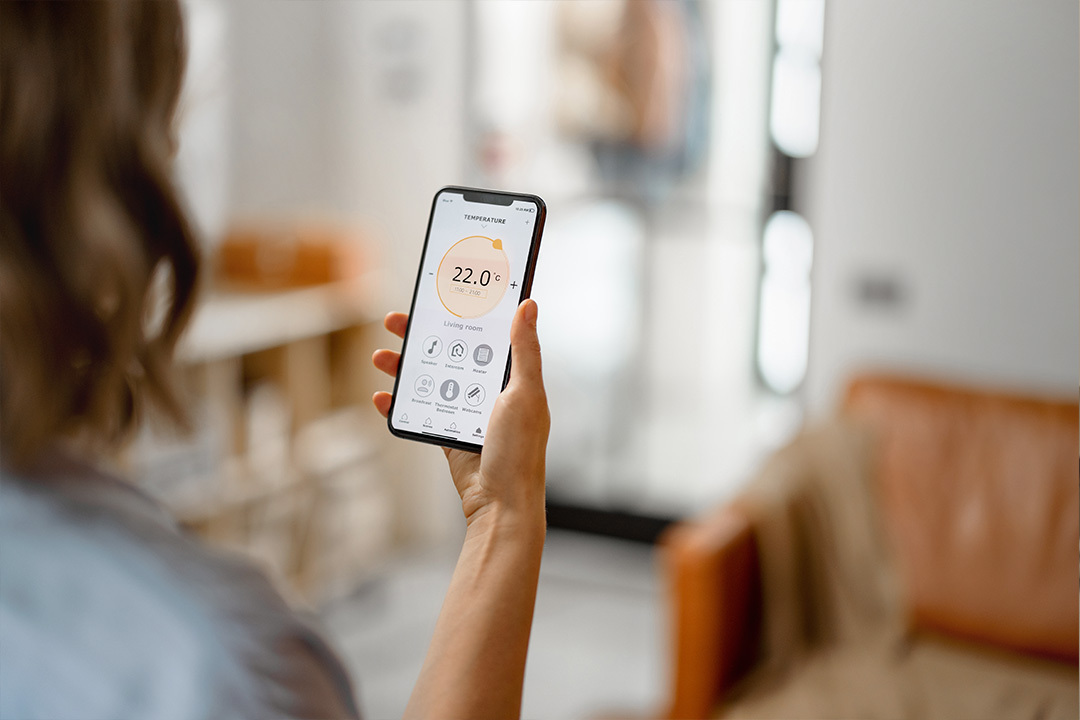Heating your home can be one of the biggest costs during the cold months. In a typical household, over half of the fuel bills are spent on heating and hot water, according to the Energy Saving Trust.
Find out the ideal room temperature for every room in your home and how you can maintain a toasty home without forking out.
Achieving a comfortable room temperature UK is akin to finding a cosy spot in a coffee shop—everyone desires it, but not everyone knows how to attain it.
What is Room Temperature?
Room temperature isn’t merely a number on your thermostat; it’s the delicate balance where comfort meets functionality. It refers to the range of temperatures that humans find comfortable for indoor activities, typically around 18-24 degrees Celsius.
Factors Affecting Room Temperature
Several factors influence room temperature, from external weather conditions to internal heat sources like appliances and occupants. Understanding these variables is crucial for maintaining a consistent and comfortable environment.
Ideal Room Temperature Guidelines
Recommended Temperature Ranges
Experts suggest keeping your thermostat between 18-21 degrees Celsius for optimal comfort during the day and slightly cooler at night for better sleep quality.
Variations for Different Seasons
Comfortable room temperature UK requirements vary with the seasons. While warmer temperatures are preferred in winter, cooler settings are more suitable for summer months to combat heat and humidity.
Impact on Health and Comfort
Maintaining an ideal room temperature promotes better circulation, prevents dehydration, and reduces the risk of heatstroke or hypothermia, especially for vulnerable individuals like the elderly or infants.
How to Measure Ideal Room Temperature
Accurately gauging room temperature is essential for effective regulation. Use a digital thermometer placed away from direct sunlight or heat sources for the most accurate readings.
In the UK, What Temperature Should Your Home Be?
Some people like to keep their home warm, and others like to keep it cool. It takes all sorts. But what’s the ideal room temperature uk?
The World Health Organisation (WHO) recommends that UK households have an average room temperature uk in winter of around 18°C if they are a home of healthy adults. The elderly, young children and those with medical conditions may need something warm.
The Energy Saving Trust says you should set your thermostat to the lowest comfortable temperature but should aim for around 18-21°C. And they estimate you can save as much as £145 a year by turning your home’s thermostat down by just one degree.
When Should You Turn Your Heating On?
Some people will need to heat up, but as a rule of thumb, if the outside temperature is below 15°C, it’s time to turn the heat on.
This will also affect how well your home is insulated.
The best times of the day to turn on the heat are first thing in the morning, before you get up, and after dark. For complete control of your household heating, it might be worth investing in a smart thermostat. This means you can control the temperature remotely when you’re out and about.
What About Different Temperatures for Different Rooms?
Different rooms have different recommended temperatures. Here’s how warm each room in your home should be, according to OVO Energy and the NHS.
| Room | Minimum recommended temperature °C | Maximum recommended temperature °C |
| Living room | 19 | 22 |
| Bathroom | 22 | 22 |
| Bedroom | 16 | 20 |
| Kitchen, hallway & storage rooms | 16 | 18 |
| Baby’s room | 16 | 20 |
Can I Save Money by Controlling Room Temperature?
The colder you keep your home, the lower your heating bill will be – simply because less heat is lost in a cooler home. Of course, the better your insulation, the hotter it will stay.
So, is it possible to save money by keeping your home at a comfortable temperature of 18°C to 21°C? Yes.
Temperature by Season
Many people also struggle with knowing what to do with their room temperature at different times. The good news is that a comfortable temperature should suit most of us year-round. In winter or summer, you should keep the rooms at about 18 – 20°C.
For example, if winter means temperatures exceed 20°C, you need to take measures to keep your room cool. This can be done by opening windows and doors and making sure your heating is turned off during the day.
Adjusting your temperature to a warm 18 to 20 degrees Fahrenheit during the winter months should help keep you warm. However, assume that the outside temperature is in hours. In that case, you need to turn on the heater constantly throughout the day to keep your home warm enough for the whole family.
What Happens If Your Ideal Room Temperature is Too High?
If you want to crank up the heating in your home, you need to consider the consequences of this. For example, researchers have found that the hotter the room, the harder it is to concentrate, so you could be doing more harm than good to your health by asking to turn on the thermostat to the top of the hill.
Aside from affecting your well-being, turning up the heat will have a significant impact on your energy bills. More than that, it can also have a significant impact on the environment. So, if you’re interested in protecting your back pocket and our planet, you might want to consider turning your thermostat down a bit. In fact, changing your thermostat by just one degree can save you around £80 a year on your heating bills and around 320kg of carbon dioxide, making it an efficient way to run your boiler.
What Happens if Your Room Temperature is too Low?
If your home is too cold, you’re at risk of developing problems such as dampness, condensation, and even mould – all of which not only spell bad news for your property but also for your health. These problems arise because cold air cannot carry hot water or hot air.
Excess moisture that is naturally present in your home (e.g. from the bathroom or cooking on the hob) is then applied to walls and other shallow surfaces. This is rarely a problem as such moisture is temporary and removed leave (or it opens in your window briefly). Using an extractor fan), if left in any way, can cause mould, and that is why asthma and other respiratory problems can be worse when you live in a cold room.
Upgrade Your Outdated Boiler with a Free Boiler Grant
If your boiler was installed before 2005 and is not working well to help you achieve ideal room temperature, you may qualify for a free boiler replacement under the ECO4 scheme. This grant could help you upgrade to a more energy-efficient system, achieve ideal room temperature, reducing your energy bills and carbon footprint.
Conclusion
Achieving and maintaining a ideal room temperature UK is a fine balance of science and comfort. By understanding the nuances of room temperature regulation and implementing practical tips, you can create a cosy and inviting space that enhances your well-being and productivity year-round.
FAQs
Q1: What is the average room temperature in the UK?
The average room temperature in the UK typically ranges from 18 to 21 degrees Celsius for optimal comfort.
Q2: How do I know if my room is too hot or too cold?
Pay attention to signs of discomfort, such as sweating or shivering, and adjust the temperature accordingly to maintain comfort.
Q3: Can maintaining the ideal home temperature save energy?
Yes, maintaining a comfortable room temperature UK and optimising heating and cooling systems can significantly reduce energy consumption and utility bills.
Q4: Is it better to use central heating or space heaters for room heating?
Central heating is generally more efficient and evenly distributes heat throughout the space, whereas space heaters are suitable for targeted heating in smaller areas.
Q5: How often should I change the air filters in my HVAC system?
It’s recommended to change air filters every 1-3 months to maintain optimal airflow and indoor air quality.








